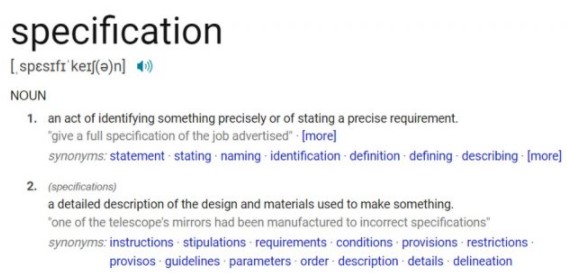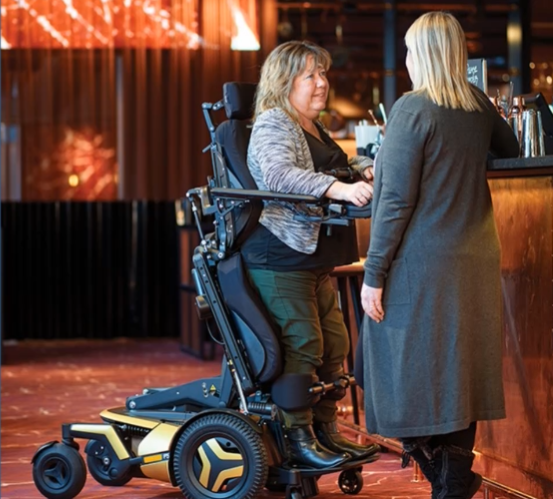As technology has evolved, so too has the technology, materials and electronics that go into powered mobility base designs. Most complex rehabilitation bases are now modular in nature, meaning multiple components can be combined to provide a solution that is unique to an individual. Some of these components are essential to the build of the chair while others are required to provide the optimal functional outcome required for the end user.
Often we only become aware of what components are required to build a chair when we receive the quote – where quotes can differ from country to country, state to state and with different suppliers. It can be quite overwhelming when the components are itemised within a quote, especially when we are not intimately familiar with power wheelchair bases and we need to be able to complete a report to the funder to justify the cost of the solution.
How do we know what information in the quote needs to be justified in our funding report? The foundation to any good funding report is sound and well-articulated clinical reasoning. Our clinical reasoning process should help us identify what features will be required or needed to meet the user’s identified goals. But how do we consistently achieve this? By following a process and articulating that process clearly we can demonstrate sound clinical justification.
For the purposes of this blog we will look at the dictionary definition of feature and specification and how we can use these terms to assist with our report writing.
When we look to dictionary meanings, we see a feature described as a distinctive part of something, whereas the definition of a specification is more about the recipe or the plan to build. If we consider these definitions, we can also consider features within power bases as the additional functions it has above and beyond a standard driving base unit. The specifications then relate to how this feature is designed or operated.


Let’s take the example of a powered seat height function. The AT feature would be that you can adjust the seat-to-floor height of the base. This feature is available on a range of chairs from multiple manufacturers; however, seat elevators are designed and operate in different ways. This includes the mechanical differences; there are differences between a scissor lift, a Column lift and Permobil’s AP unit, height ranges and travel. Once you have identified the functional requirement of a feature then you can consider the specifications and how this may impact on the functional outcome for a specific end user.
Let’s consider a client we have assessed for a powered mobility base. What are the clinical decisions that need to be made?
- What configuration will best meet this user’s goals? What environments and terrain do they normally traverse? What is the access like? What kind of turning spaces are required to access all areas of the home? What experience has the user had with mobility bases? What are the barriers currently impacting on mobility? These are some of the considerations when determining the drive base. Different drive configurations will manoeuvre and drive differently in different environments. We could see the type of drive configuration as a feature of the AT, where the wheel is placed exactly, and how it attaches to the chassis would be more of a specification specific to the brand manufacturer. These specifications may come into consideration when you are comparing how a base with similar features differs.
- Will the user require or need power seat functions to assist them in meeting mobility and/or functional goals? Power seat functions provide increased function outcomes and indeed could be seen as beneficial to all users. However when we are seeking funding for these features we need to consider them in terms of functional outcomes. We need to identify what activities and tasks are impacted by the impairment. Will being able to complete these tasks have a functional outcome? – could the task be completed without the additional seat function? As well as forming part of the clinical reasoning process, you are identifying potential justification for requesting the feature as a funded feature. I tend to think about power seat functions as features of the AT solution. How they operate, use of actuators etc are the specifications again specific to the manufacturer.
Let’s break it down:
Assessment: identify mobility and functional issues. Identify how functional Impairment impacts on task.
As part of the clinical reasoning process – initially identify features such as PSF. Once you identify the features required you can consider the potential solutions and specifications to compare.
When completing your report it is worth noting which components are essential to the build of the chair, and which components are additional and are required for the person to achieve their identified goals. For example:
While talking to some therapists recently, I have noticed an increase in the justification for functional outcomes for things that could be seen as more of a specification, for example a standard joystick.
Looking at the big picture, the feature we are looking at here is the drive control method, or how the person will drive the chair. When considering drive control options, there are multiple options that are associated with different costs, with a joystick being the ‘standard’ and lowest cost option. Hence it does not typically require any justification, unlike alternative drive controls which are higher cost hence require additional justification in your report.
Something that is integral to the base such as the joystick for example. Whilst clearly the joystick is an AT feature of a powered wheelchair it is also integral to have a standard joystick as a minimum to operate a powered wheelchair – as such whilst it is important to have considered the input method and can be valuable to comment on, its more important to discuss any alternative controls as these are additional features that are a requirement for that specific users ability to operate their chair. Another example, the control box for seat functions – do we need to explain this or do we need to make a clear case between need and the actual seat functions recommended.
To ensure these functions are essential requirements we need to clearly articulate how these features improve functional outcomes. These examples sometimes come about because of the description or wording on the quote or how the quote has been itemised and at other times because we are not sure what a specific item is. The AT features or additional or non-standard features that the clinical justification needs to focus on is the clinical outcomes and necessity for the user. If you’re not sure of a specific item on a quote reach out to your local dealer or Permobil Rep or us here at the Clinical team.
Although it can appear overwhelming, your local product specialists are there to talk you through and assist you to compare the various powered mobility bases available. They understand the specifications and how they relate to the differences in bases. We also have a range of clinical educational opportunities to assist therapists in building their knowledge and clinical prescription skills. You can reach out to us at any time for any support or to chat through a scenario. For those therapists with more experience prescribing bases make sure you keep up to date with the latest technologies and advancements by staying in touch with your local supplier and seeking experiences to try out and compare how AT features differ based on specifications.
Its important to remember we are all at different levels of experience and have different levels of clinical reasoning. If your feeling a little uncertain around the process or powered mobility base prescription reach out to your local educator at education.au@permobil.com

Tracee-Lee Maginnity
Clinical Services Specialist
Permobil APAC
Tracee-Lee Maginnity joined Permobil Australia in July 2019, as a clinical education specialist. Originally from New Zealand, she graduated Auckland University of Technology with a BHSc (Occupational Therapy) in 2003 and has since worked in various roles related to seating and mobility including assessing, prescribing and educating. After gaining experience as an assessor and prescriber at Seating To Go / Wheelchair Solutions in prescribing for both disability and injury, she moved to Australia in 2011 to take on the Senior Occupational Therapist role in a custom moulded seating service. She then worked in clinical consulting and education roles until joining Permobil.
Tracee-Lee is passionate about maximising functional outcomes with end users and the importance of education within the industry. She has mentored many therapists interested in AT. Her experience includes working with complex postures to achieve custom outcomes. Tracee-Lee is also an international wheelchair rugby classifier where she enjoys the task analysis of wheelchair propulsion and functional capacity identification of athletes.
